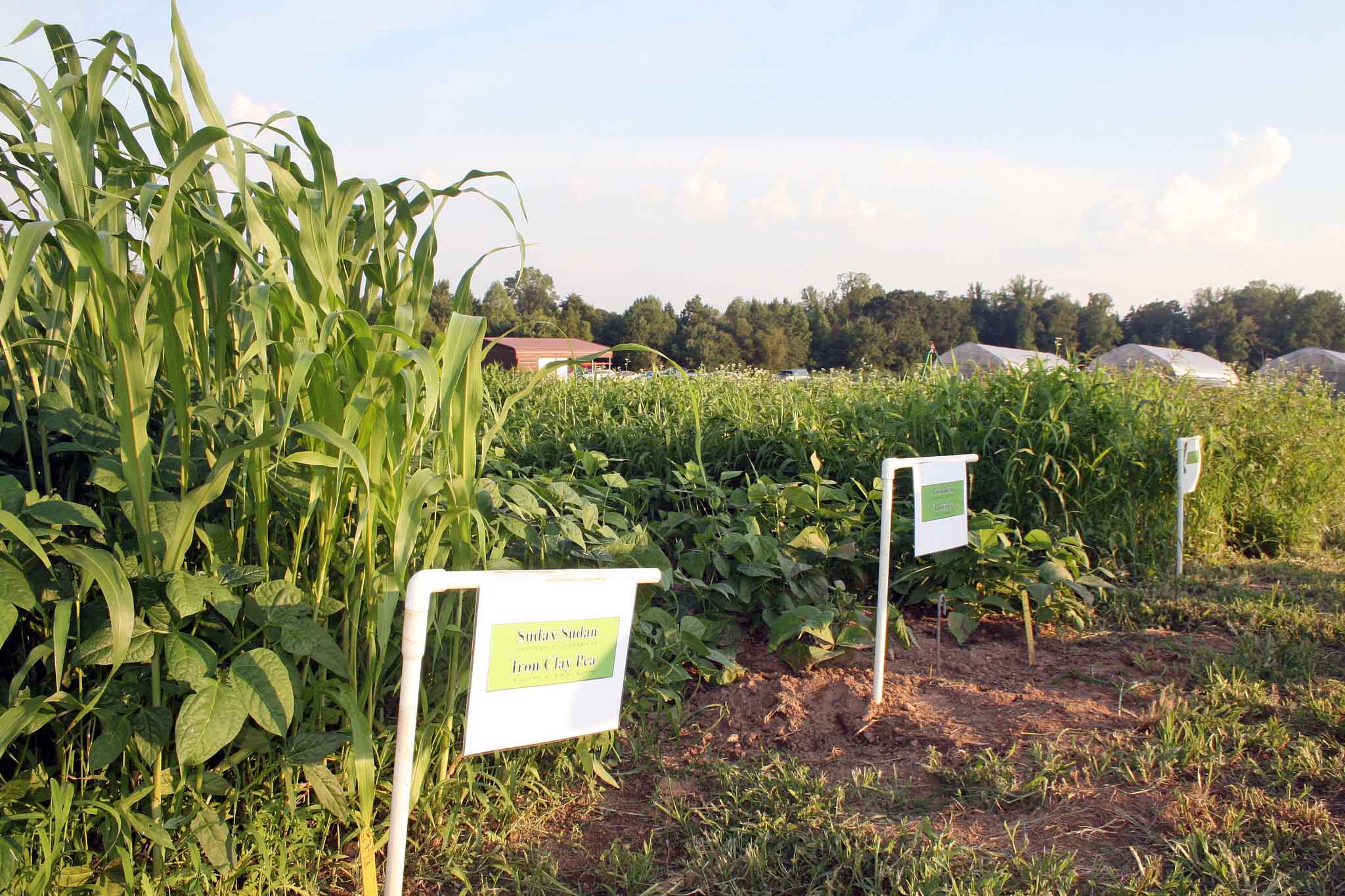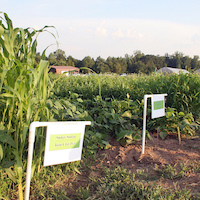Cover crops may be your secret weapon to a better harvest next spring. Any gardener who was disappointed in their corn, tomato or squash harvests this summer might want to start preparing for next summer’s crop now by planting cover crops.
Cover crops have long been used by farmers to help boost the fertility of the soil, but they can be just as useful for boosting backyard harvests, said Julia Gaskin, sustainable agriculture coordinator for the University of Georgia College of Agriculture and Environmental Sciences.
At the University of Georgia’s organic teaching farm in Watkinsville, next spring’s planting beds are already covered with a mixture of cowpea, sorghum and buckwheat — plants that naturally put nutrients back into the soil, attract beneficial insects and block weeds from taking over the bed.
“It keeps the soil covered, feeds the soil and stops erosion,” Gaskin said. “They have as much biomass below ground as you see above, and the added organic matter affects the structure, biology and chemistry of the soil.”
Your local UGA Cooperative Extension agent can recommend the best mix of cover crops for your area and what you plan to grow next year. Crimson clover, Austrian winter peas, rye and oats are often recommended as winter cover crops for spring vegetable production.
Legumes like crimson clover, Austrian winter peas and vetch leave nitrogen in the soil that can be used by next spring’s crops. Cereal grains like rye and oats reduce weed populations, reduce erosion problems and add biomass to the soil.
The first step is to mow down the remnants of your summer garden. If there were diseased plants, be sure to remove and dispose of them first. Pull out the tomato cages and bean stakes and go to town, knocking everything down to the ground with a lawn mower or string trimmer.
The seeds of cover crops like Austrian winter peas and clover cost between $2 and $10 a pound and can be broadcast or manually seeded throughout the garden patch. Depending on the mix of cover crops you decide on, you will need between 1 and 3 pounds of seed per 1,000 square feet.
If you haven’t grown these legumes before, be sure to buy the correct inoculant to ensure the right beneficial bacteria are present to help the plant fix nitrogen from the atmosphere.
Next March, when you start to prepare for your spring garden, you will need to mow or use a string trimmer to knock the cover crop down. Many growers till the cover crop in a couple of weeks before planting their summer crops. This allows the cover crops to decompose and begin the release of stored nutrients. If you are transplanting vegetables like tomatoes, these can be planted directly into mowed cover crops on the surface after it has dried out. Gaskin said.
The soil will be reinvigorated and the residue from the knocked down cover crop will act as mulch for you planting bed, blocking some weeds and keeping water from evaporating from the soil.








